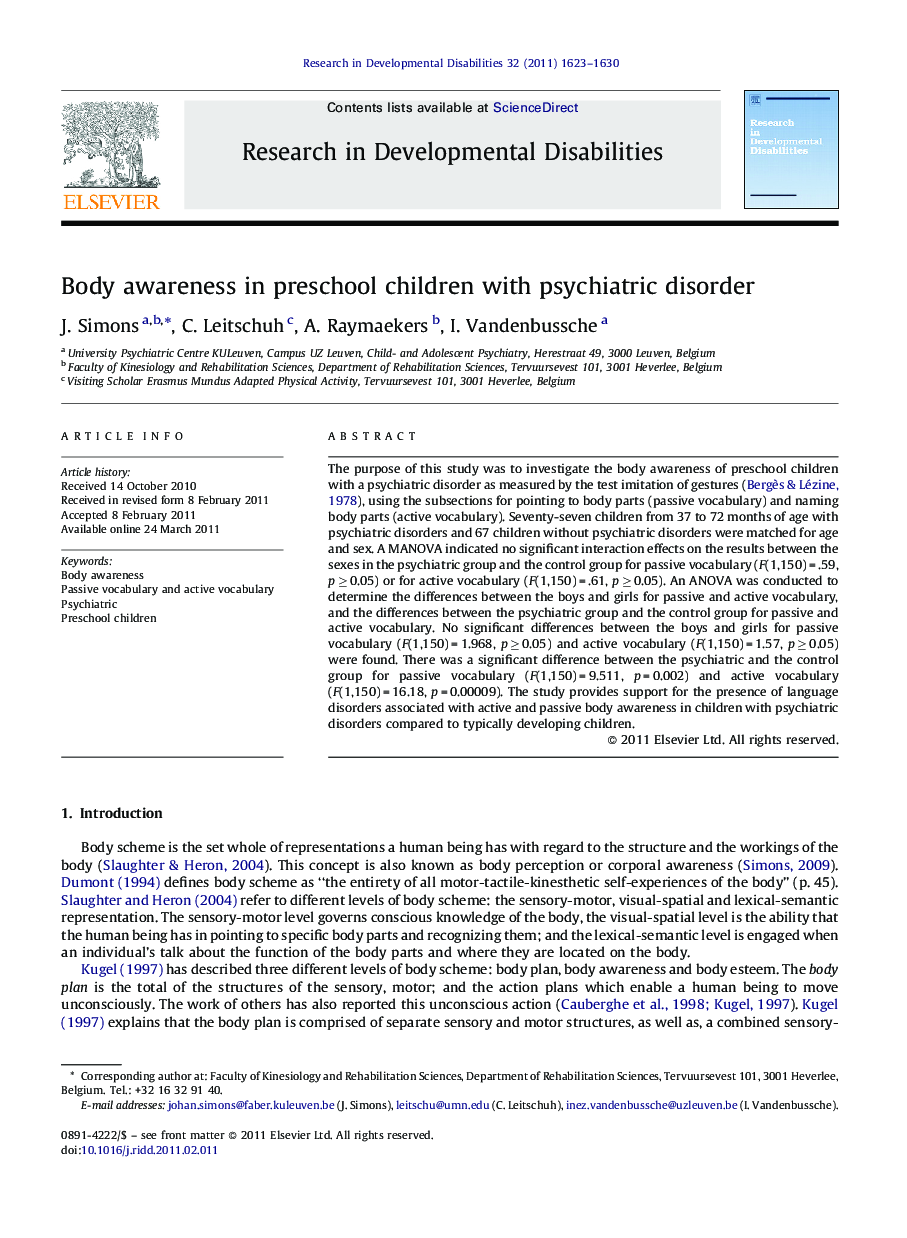| Article ID | Journal | Published Year | Pages | File Type |
|---|---|---|---|---|
| 371692 | Research in Developmental Disabilities | 2011 | 8 Pages |
The purpose of this study was to investigate the body awareness of preschool children with a psychiatric disorder as measured by the test imitation of gestures (Bergès & Lézine, 1978), using the subsections for pointing to body parts (passive vocabulary) and naming body parts (active vocabulary). Seventy-seven children from 37 to 72 months of age with psychiatric disorders and 67 children without psychiatric disorders were matched for age and sex. A MANOVA indicated no significant interaction effects on the results between the sexes in the psychiatric group and the control group for passive vocabulary (F(1,150) = .59, p ≥ 0.05) or for active vocabulary (F(1,150) = .61, p ≥ 0.05). An ANOVA was conducted to determine the differences between the boys and girls for passive and active vocabulary, and the differences between the psychiatric group and the control group for passive and active vocabulary. No significant differences between the boys and girls for passive vocabulary (F(1,150) = 1.968, p ≥ 0.05) and active vocabulary (F(1,150) = 1.57, p ≥ 0.05) were found. There was a significant difference between the psychiatric and the control group for passive vocabulary (F(1,150) = 9.511, p = 0.002) and active vocabulary (F(1,150) = 16.18, p = 0.00009). The study provides support for the presence of language disorders associated with active and passive body awareness in children with psychiatric disorders compared to typically developing children.
► Studies which investigate the language aspects of body awareness are rare, and studies in this area for children with psychiatric problems are virtually non-existent. This paper offers results of a group of 77 preschool children using a relatively easy, short and reliable test. This opens perspectives for clinical use.
